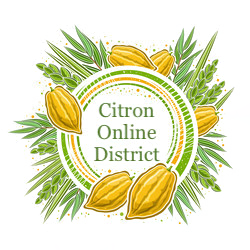Key Links:
For more guides and teaching resources please join National Speech & Debate Association
What is Public Forum Debate?
The spirit of the event comes from one of the most common forms of civil discourse the general public will come in contact with. Facts, figures, statistics, and persuasive tactics are the key characteristics of this format that make it approachable to all competitors and judges alike.
Example Topics (changes every 2 months)
Resolved: The United States Federal Government should substantially increase its investment in high-speed rail.
Resolved: The United States’ strategy of Great Power Competition produces more benefits than harms.
Traditional Case Structure
(Optional) Opening quote from a relevant figure
(Optional) Topicality/Definitions.
(Optional) Lay the ground work of the status quo. What is and is not happening
Framework (optional): framework functions as an alternative way of approaching a topic than what might have been expected. For example Public Form often defaults to viewing a round off of Utilitarianism (typically thought of as the greatest good for the greatest number of people. Or simply net benefit) however if a team wants to assert there is another consideration that would be held higher in the weighing of the round this is where they would lay out why.
Contentions: This is where facts, figure, statistics support your position.
(optional) Sub point A:
Link to resolution
Harms/Impacts
Solvency/link to value criterion
(optional) Sub point B
Speech times
Speaker 1 Pro - Constructive (4 minutes) - Present the team’s case
Speaker 1 Con - Constructive (4 minutes) - Present the team’s case
Speaker 1 Pro & Speaker 1 Con - Cross Fire (3 minutes) - Challenge opponent & clarify your case
Speaker 2 Pro - Rebuttal (4 minutes) - Refute the opposition & reaffirm your case
Speaker 2 Con - Rebuttal (4 minutes) - Refute the opposition & reaffirm your case
Speaker 2 Pro & Speaker 2 Con - Cross Fire (3 minutes) - Challenge opponent & clarify your case
Speaker 1 Pro - Summary (3 minutes) - Narrow the scope of the arguments and establish the voting issues
Speaker 1 Con - Summary (3 minutes) - Narrow the scope of the arguments and establish the voting issues
All 4 Speakers - Grand Cross Fire (3 minutes) - Challenge opponent & clarify your case
Speaker 2 Pro - Final Focus (2 minutes) - Justify how you have won the debate
Speaker 2 Con - Final Focus (2 minutes) - Justify how you have won the debate
Prep Time - Each team may take up to 3 minutes of time outs in 30 second increments
Questioning
Public Forum is unique in that crossfires are shared question time. While this is usually the most combative part of the debate there is a level of respect and sportsmanship expected. It is crucial for teams to ask the opposition if they would like to ask a question and trade-off the time. For many this is where speaker points are decided.
Key Terms
Contentions: These are the complete packaged arguments that have a direct link to the resolution, addresses an issue, and provides a clear position to vote for or against. Contentions should be numbered for easy reference such as 1, 1a, 1b, 2, 3a, 3b. This allows both the judge and the opponent to flow the debate more easily. If an opponent did not address one of the numbered contentions the debater is encouraged to call this out to the judge during their rebuttals, this is known as “dropping an argument”.
Impacts/Voter Issues: These are the reasons that a judge votes for a given team. In the summary and final focus teams will present what hypothetical worlds could exist if a judge were to vote Pro/Con and this choice is how round winners are determined. For example, each side may present a different potential/hypothetical outcome of their side of the debate, thereby allowing the judge to evaluate the impact of the arguments.
Flow: This term is in reference to the notes taken during a debate that comes from the “flow” of arguments.
Clash: Clash happens when there are two proposed positions that are in direct conflict with one another. The expectation is for there to be a clash of ideas otherwise there is no way to measure a debater’s capacity to resolve conflict through persuasion.

